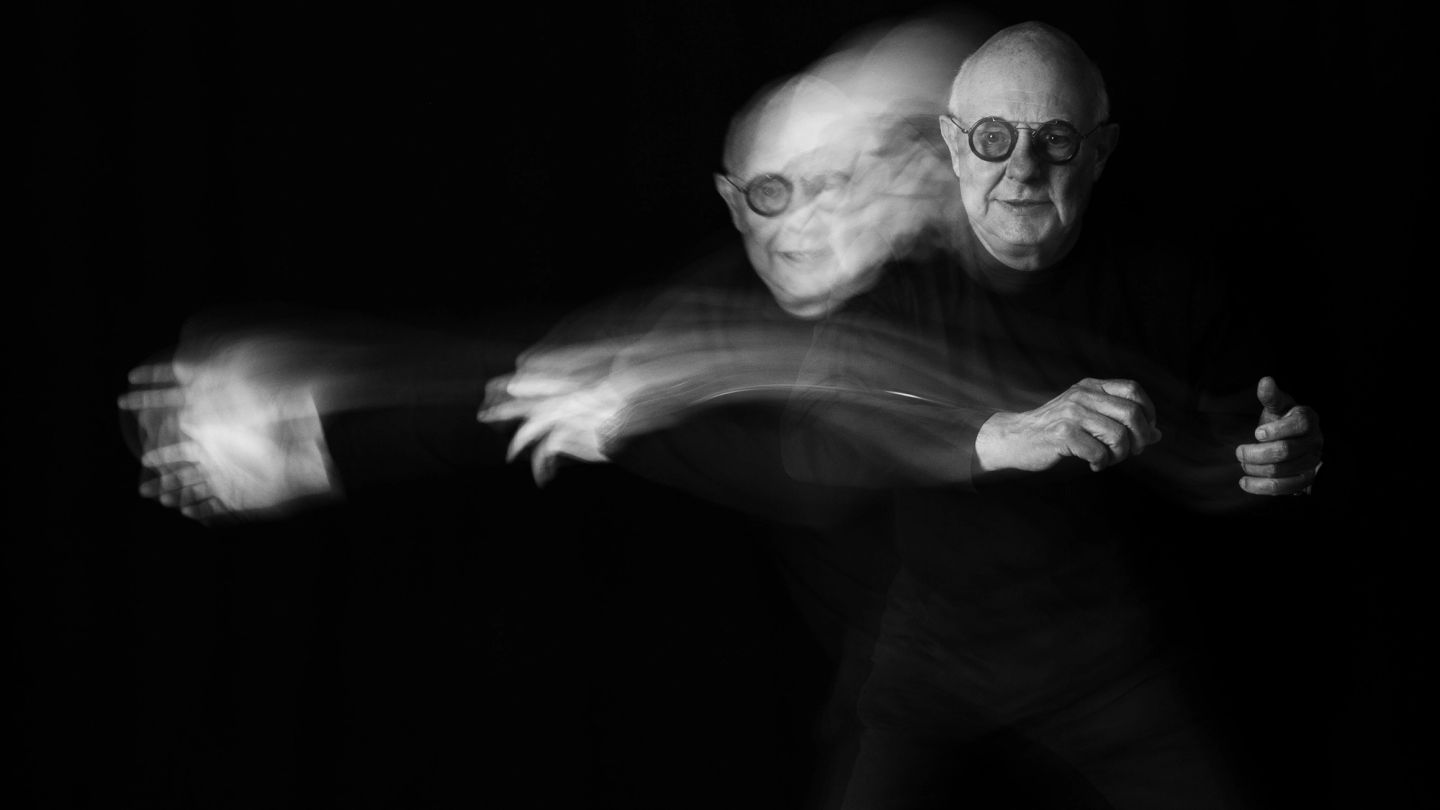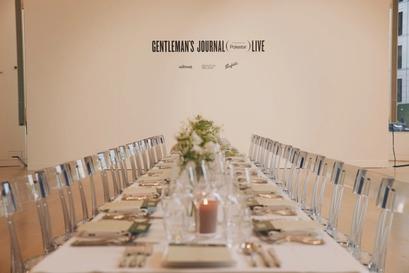

“A chair is a highly complex animal…” — Rolf Sachs’s everyday eccentricity
To be an eccentric you need time to kill,” says the artist they call Mr St Moritz. “And the few people who have the money are not the right people to be eccentric…
Words: Joseph Bullmore
Rolf Sachs’s favourite word is ‘oomph!’, and it’s written all over his face — the perfect circles of his spectacles like two big ‘Os’; the constant smile an exclamation point. Everything he does is filled with this little word, this gutsy sound. “It means: let’s get on with it, and give it a push, and probably have a little humour. It’s a good word.” In St Moritz, where he partially lives, the oomph kicks him downhill, namely on the Cresta Run — that daredevil teatray ride down an icy toboggan track — a ritual he still performs “about 12 to 15 times a year, maybe.” Though Sachs says “he has no first home”, Switzerland is very much a close runner up. He speaks in the Engadine dialect of this glitzy, down-to-earth valley, and lives in the old Olympic stadium near the Cresta, a building decommissioned from when St Moritz last held the games in 1948. (“The people see me as a semi-local” he says, while the international press call him “Mr St Moritz”.) Sachs grew up near here, having been born to a German father (the handsome, jet-set, industrialist heir Gunter Sachs) and a French mother (Anne-Marie Faure), and he went to boarding school at Le Rosey and then at Lyceum Alpinum Zuoz. Recently, he has honoured the country and his upbringing in a new exhibition with Sotheby’s — a curation of everyday objects from his life and beyond, elevated to sculptural splendour.
There’s a rake, for example. “This was an essential object for a mountain village. Before the rain came, we all went down to help the farmers rake in the hay. The rake in itself is a beautiful, archaic object that hasn’t changed over the centuries. So to give an archaic object like this a respected sculptural value has some beauty in itself.” This is oomph in progress, and to Sachs it comes naturally: “I have a lot of things that I worship,” he says.
This love of objects, he suspects, is really an extension of his love of people, and his empathy towards them. He wants to see the best in everyday things, especially if those everyday things include people, and especially those people we might encounter everyday. Other artists have driving credos about revolution, or social progress, or activism, he says. But he hopes, really, that his art helps people to “transcend a little bit to freedom of mind.” Perhaps to get our heads out of the mulchy, messy grind of the quotidian by realising that nothing, really, is quotidian.
Rolf Sachs’ St. Moritz residence in the former Olympic Stadium, photo by Frederic Ducout
This empathy was cooked up at boarding school, Sachs thinks, in an adolescent jungle where everyone quickly had to find their place. “You’re with a peer group, and in that peer group you have to build your position, and be sensitive, and finesse how you are and with whom, and what is your goal. Some guys were bullies. Others tried to help the weak ones. There are so many walks of life, which we experience later in life, which we already have here in a small cosmos, a small environment. That sharpens your antennae a bit.”
One of the objects Sachs has taken from this time is a school chair. “There is no decoration,” he says. “That gives it a certain simplicity and beauty.” Sachs loves chairs. “A chair is a highly complex animal. It is not very homogenous. It’s a really complex thing. I have lots of chairs that I have deconstructed, giving them extra legs and so on, to give them a sense of freedom. Chairs are a fun thing to collect, because I see in every chair their character.”
Chairs are so important and so fundamental, in fact, that we almost stop seeing them, he says. “But if you think about it, if you go into a restaurant, the most dominant part that gives the restaurant its signature is the chairs. A table is always a table. But the chair is the key element.”
Part of this sensibility and sensitivity must have come from Sachs’s father, Gunter — a photographer, art collector, sportsman and (this is an understatement) bon viveur, who curated works by Andy Warhol, Gerhard Richter, Yves Klein, and Rene Magritte in his remarkable home in St Moritz. “I was confronted with art very early on,” says Sachs, “and I knew all the artists' names that we had at home. Did I have any deep knowledge about them? I had things I liked and didn't like, and I knew of course the artists my father was especially close to.”
Rolf Sachs, Tenderly 5, 2020, Inkjet print on Hahnemühle photo rag ultra smooth paper 305 gsm, 214 x 150cm (84.3 x 59 in.)
But Sachs learned as much from the way his father lived as from the things he owned. “He was a big aesthete — a very fine person who loved beautiful objects and had a real antennae for these things,” he says. “He was an interesting character in a very interesting time, those post war years. He had the capabilities to really live life, and really embrace it, and he went quite early as a German to Paris, just 12 years after the war. When he married my French mother, her father was in absolute shock that she wanted to marry a German. And I think he managed to really pull a whole generation together who had this very new lifestyle. He was very media savvy too, let’s put it that way. He had a super open attitude towards life.”
Sachs is the President of the Dracula club, a non-profit nightclub and society in St Moritz, which his father set up in 1974. There, members must have “bite”, which is to say: personality, intrigue, self-possession, curiosity, something to say. “You just try to find friends who have the same mindset,” Sachs says. “There you have the friends who have a little bit of ‘bite,’: perhaps some humour, some elegance, some good behaviour. What do you do in a club? Why do we have them anyway? You try to have people who fit somehow together.”
Rolf Sachs, Krug – Cresta 125 years sledge, 2009, Amber resin cast, 120 x 51 x 17cm (47.2 x 20.1 x 6.7 in.) AP (Edition of 11)
Drac’s, as they call it, is a glorious, golden bubble, held in amber. But in general, Sachs says,“everybody today lives life very differently. In the old days, I remember some unbelievable eccentrics that came to St Moritz, for the whole season nearly. Today that doesn’t exist anymore. To be an eccentric you need time to kill. Everybody nowadays is busy, everybody works. And the few people who have the money are not the right people to be eccentric…”
Is Sachs himself an eccentric? I have heard that he has over 200 scarves. “I don’t know. I think I’m too middle-of-the-road to be eccentric, which sounds really dull. So perhaps I’m boring!” I think of the old saying that only boring people get bored. Sachs never seems to be in the slightest bit bored.
“Hopefully I just bring good energy to the moment,” he says. “Bring a positive mindset, a dynamic. I really try to embrace life and make something out of it and push forward. Life is a beautiful thing and it’s very very short and you only have one go.” So it might as well be filled with oomph, and rakes and chairs and other extraordinary things.


